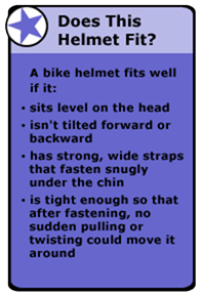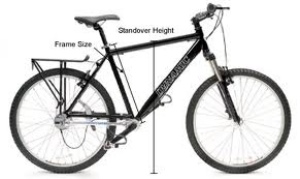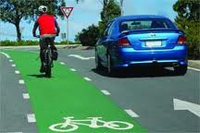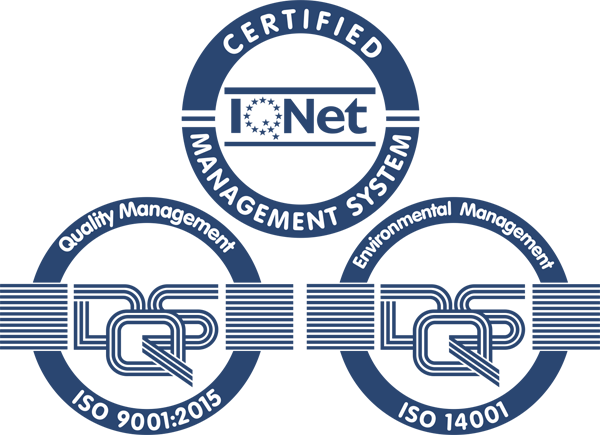|
|


Safety Tips for Bikers
Bicycle safety guide for enthusiasts in Subic Bay
It's a beautiful day - the sun is shining, the birds are chirping. What could be more perfect than a bike ride? But wait! Before you pull your bike out, let's find out how to stay safe on two wheels.
Always wear a bike helmet, even if you're going for a short ride.

Bicycle helmet use should not be optional for anyone.
Wearing one, however, doesn't mean you can be reckless, but a helmet will provide some protection for your head and brain in case you fall from your bike.
Important reminder: Kids should not wear any helmet when they're on a playground or climbing a tree - there is a risk of strangulation from the chin strap during these types of activities.
Wear your bike helmet properly.
|
Take care of your bike helmet and don't throw it around. That could damage the helmet and lessen the way it protects you when you really need it
If you do fall down, putting your helmet to the test, be sure to get a new one. They don't work as well after a major crash.
Lastly, never wear a hat under your bike helmet!
Ride the right-sized bike
|
Also, make sure your seat, handlebars and wheels fit tightly
Always wear a bike helmet, even if you're going for a short ride.

Wearing bright clothes and putting reflectors on your bike and even on your helmet help keep you safe, as they let other people on the road see you. And if they see you, that means they're less likely to run into you.
You'll also want to make sure that nothing will get caught in your bike chain, such as loose pant legs, backpack straps, or shoelaces. Wear the right shoes - sneakers - when you bike.
Sandals, flip-flops, shoes with heels, and slippers won't help you grip the pedals. And never go riding barefoot!
Riding gloves may help you grip the handlebars - and make you look like a professional!
What kids wear when riding a bike is also very important for safety:
Fluorescent or bright-colored clothes will help kids be visible on the road. (Avoid dark clothes, especially during early dusk and twilight hours.)
Lightweight clothes will help them avoid becoming overheated.
Pant legs shouldn't be too loose-fitting or flared. These can get caught up in the chain while riding.
If your child wears a backpack while riding, make sure the straps are tied up and can't get tangled in the spokes of the wheels.
Choose shoes that grip the bike's pedals. Cleats, shoes with heels, or flip-flops can all create problems while riding. Kids should never ride barefoot!
Look out for vehicles, other riders and road obstacles when biking.
|
Keep an eye on the road ahead so you can be prepared for big hills and road obstacles. Some common one that can cause falls include:
Wet leaves
Big puddles
Changes in the road surface
Storm grates
Gravel or rocks
Curbs
Little kids in your way!
Always follow basic road rules when biking.

Always ride with your hands on the handlebars.
Always stop and check for traffic in both directions when leaving your driveway, an alley, or a curb.
Cross at intersections. When you pull out between parked cars, drivers can't see you coming.
Walk your bike across busy intersections using the crosswalk and following traffic signals.
Ride on the right-hand side of the street, so you travel in the same direction as cars do. Never ride against traffic.
Use bike lanes or designated bike routes wherever you can - not the sidewalk.
Don't ride too close to parked cars. Doors can open suddenly.
Stop at all stop signs and obey street (red) lights just as cars do. Yield to pedestrians, stop at red lights, and be especially careful at intersections.
Ride single file on the street with friends.
When passing other bikers or people on the street, always pass to their left side, and call out "On your left!" so they know that you are coming.
Never ride at dusk or in the dark.
Watch traffic closely for turning cars or cars leaving driveways.
Never share the seat with a friend or ride on the handlebars - only one person should be on a bike at a time. It's easy to lose balance or suddenly swerve into traffic when riding with a passenger.
Never wear headphones while biking - it's essential to hear everyone and everything else on the road at all times.
Never stand up while riding a bike.
Never hitch a ride on a moving vehicle.
Never change directions or lanes without first looking behind you, and always use the correct hand signals.
Use hand signals.
Learning the right hand signals is vital to your safety.
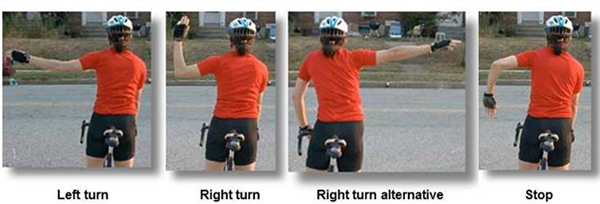
Never change directions or lanes without first looking behind you, and always use your left hand and the correct hand signals, which are like turn signals and brake lights for bikers.
Maintain your bike for safety

Check the condition of your bike regularly to keep it safe and well-maintained.
Be sure to check:
Tires - Inflate to the pressure that's recommended on the sidewall of the tire.
Chain - Oil it regularly and remove dirt.
Handlebars - Tighten all bolts. Also adjust the height of your kid's bike as your child grows.
Brakes - Check for frayed cables and replace worn-out brake pads. Make sure they're working well and aren't sticking.
Seat - Keep the seat level and adjust its height as needed
(Source: http://www.kidshealth.org)
